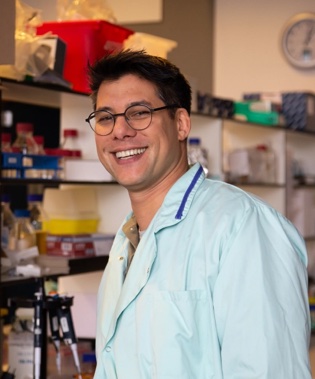Molecular Mechanisms of Synaptic Plasticity
I aim to mechanistically understand how assemblies of synaptic proteins contribute to synaptic plasticity in health and disease

I aim to mechanistically understand how assemblies of synaptic proteins contribute to synaptic plasticity in health and disease

Our goal is to understand the specific molecular, cellular and network adaptations that occur in the brain in the earliest stages of Alzheimer’s diseasse, and to test how these adaptations can be used for early disease diagnosis and intervention.
The focus of my team is on cognition and how it is affected by neuropsychiatric ailments, such as depression. We study maladaptation of synapses and circuitry brought about by unique molecular signatures in hippocampus and prefrontal cortex.

Our research aims to discover new glial-based mechanisms of information processing in the brain in health and disease, with a focus on the role of astrocytes in the regulation of myelin and synaptic plasticity.

Our goal is to gain mechanistic insight into the neural circuitry, cells and molecules that support persistent memories of negative and positive experiences.

The main goal of my research team is to identify the bio-molecular framework on which aversive associative memories are built and maintained throughout their lifetime.

Together with the SynGO consortium, we are helping to create an expert-curated knowledge database with information about genes expressed in the synapse, their involvement in biological processes and interaction partners. We aim to add information to the database from our own high-throughput molecular experiments. The low amount of false positives will enable us to perform meaningful and reliable pathway analyses that can aid research into synaptopathies such as autism spectrum disorder and schizophrenia. In addition, my team also focuses on innovative ways to maintain the quality of education with a growing student population.
We study the mechanisms that control the molecular organization and function of neuronal synapses. The goal of our lab is to understand the dynamic molecular processes at synapses that control neuronal signaling. Insight in these processes is key for a fundamental understanding of brain function, and the etiology of diseases such as autism or schizophrenia.
